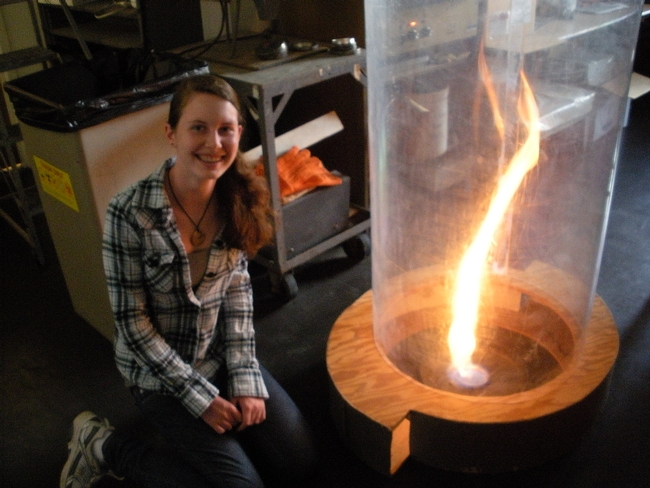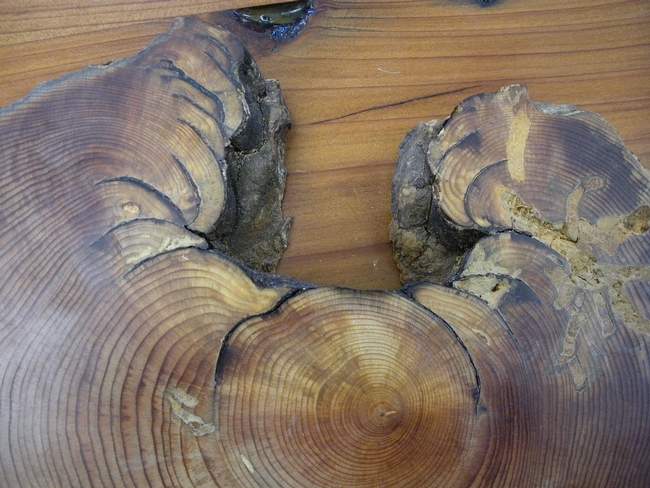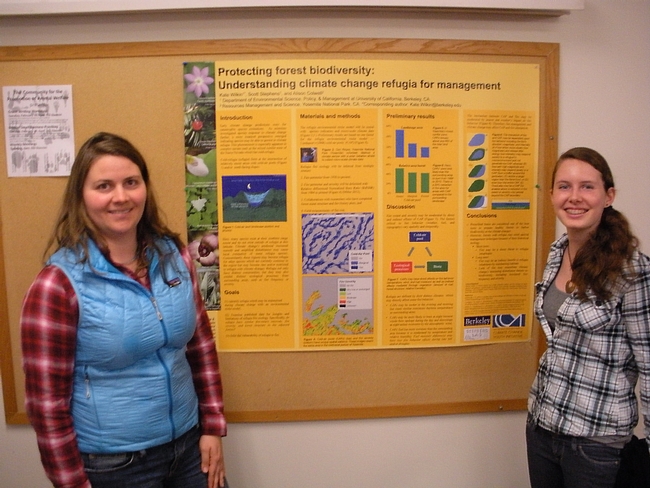Ask most youth what they think about wildfires in forests and they will usually respond with "they kill trees and animals" or "it’s bad – they burn down homes and put out lots of smoke." They are partially right.
Ask youth about considering a career studying the history of fire from a tree cookie, a slice of tree branch that shows the rings, or lake bed sedimentation. Or ask them what role wind plays in how a fire jumps from treetop to treetop or how wildfire can help open pine cones and produce a huge flower show. Then they might respond with, "No way, is that a real job?"
Two eighth-grade students at Sutter Middle School in Sacramento got a chance to learn about fire ecology careers through a project in their science class requiring researching science careers. Students Maura Ingram and Jordan Johnston decided to explore fire ecology and learned that fire is a hot career choice.
Maura and Jordan interviewed Scott Stephens, professor in the Department of Environmental Science, Policy and Management at UC Berkeley*, about fire ecology careers. They learned that fire ecology as a discipline focuses on the origins of wildland fire and its relationship to the environment, both living and non-living. Fire ecologists recognize that fire is a natural and important process in the forested ecosystem, one that both animals and plants depend on.
“Some fire ecologists will be fire managers working with the U.S. Forest Service, National Park Service or private companies and will ignite and manage prescribed fires and manage wildfires,” Stephens said. “Other fire ecologists with jobs like mine will do research and write papers as teachers and university faculty. That will help guide fire managers in their work. More people are getting interested in fire ecology and the field has really grown in the last 15 years."
"Fire effects the forested landscape, by shaping the patterns of vegetation growth and mortality, recycles nutrients and changes the foraging and reproductive habitat for wildlife,” Stephens continued. “Fire is a critical part of most ecosystems in California and not allowing it to operate is causing great harm. We can do some operations with mechanical thinning and other methods to duplicate some aspects of fire, but not all of them.”
Anu Kramer and Kate Wilkin, UC Berkeley graduate students in the Stephens Fire Lab, showed Maura some of the tools they use in fire ecology research, such as lidar, computer fire models and the fire vortex used to demonstrate fire physics and extreme fire behavior.
“Extreme fire can create its own weather patterns including the creation and collapse of a fire column which can be very dangerous,” said Anu. “The fire vortex helps us visualize this on a small scale for our research.”

UC Berkeley students and researchers are working to understand how warming and precipitation changes due to climate change will affect fire frequency and behavior, and how fire disturbances affect plants by conducting scientific research and providing training in the fields of wildland fire science, ecology, and resource management. Students and researchers participate in interdisciplinary efforts when possible and share findings by publishing results in peer reviewed academic journals, posters for academic conferences, and conducting outreach to schools. Berkeley provides high quality scientific training and guidance for graduate students that will prepare them for careers in academia or professional fire science, policy or management.
“When you think about fire-related careers, most kids think that firefighters are the only ones that deal with fire directly,” said Maura. “But the career opportunities are endless. I have learned a lot about how important fire is. Fires can still cause a lot of damage to the forest and homes, but studying fire ecology is helpful because we can then use the data to apply fire in a more beneficial way – ways that help the forest, wildlife and the overall environment."
Stephens is one of the principle investigators of the Sierra Nevada Adaptive Management Project (SNAMP). SNAMP is investigating how fuels thinning projects effects fire behavior and forest health, water quality and quantity, and wildlife.
Attached Images:

